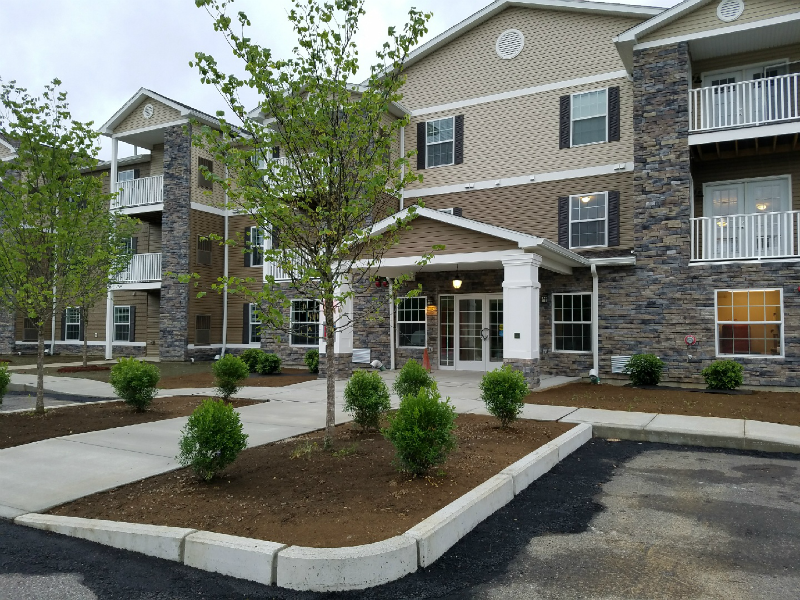Welcome to our guide on choosing a Continuing Care Retirement Community (CCRC). Making the decision to move to a CCRC is a significant milestone, and it’s essential to select the right community that meets your needs and preferences. In this comprehensive guide, we’ll provide you with valuable insights and considerations to help you navigate the process of choosing the perfect CCRC for you or your loved one.
Continuing Care Retirement Communities offer a unique housing option for seniors who desire independence while having access to a continuum of care as their healthcare needs evolve. These communities provide a range of services and amenities, from independent living to assisted living and skilled nursing care, all within one campus or facility. Choosing the right CCRC involves careful consideration of factors such as location, cost, services, amenities, and community atmosphere.
Whether you’re exploring CCRCs for yourself or assisting a loved one in the decision-making process, this guide will empower you with the knowledge and resources needed to make an informed choice. We understand that every individual has unique preferences and needs, and our goal is to help you find the CCRC that best aligns with your lifestyle, budget, and expectations.
Join us as we delve into the world of CCRCs and embark on the journey of choosing the perfect community for your future.
What is a CCRC?
Continuing Care Retirement Communities (CCRCs), also known as Life Plan Communities, are residential communities designed to offer a continuum of care for older adults. CCRCs provide a comprehensive range of housing options and healthcare services within one campus or facility, allowing residents to age in place as their needs change over time.
Key Features of CCRCs:
- Continuum of Care: CCRCs offer a continuum of care that includes independent living, assisted living, and skilled nursing care. This means that residents can transition seamlessly between different levels of care as their health and mobility requirements evolve.
- Independent Living: In the independent living phase, residents live in private residences such as apartments, cottages, or villas. They enjoy an active and maintenance-free lifestyle, with access to amenities and social activities tailored to their interests.
- Assisted Living: Assisted living services are available for residents who require some assistance with activities of daily living (ADLs), such as bathing, dressing, or medication management. Assisted living facilities within CCRCs provide personalized care and support in a residential setting.
- Skilled Nursing Care: For residents with more complex medical needs or chronic health conditions, skilled nursing care is available on-site. Skilled nursing facilities within CCRCs offer 24-hour nursing care, rehabilitation services, and medical supervision to ensure residents’ health and well-being.
Amenities and Services:
CCRCs offer a wide range of amenities and services to enhance residents’ quality of life. These may include:
- Dining venues serving chef-prepared meals
- Fitness centers, pools, and wellness programs
- Social and recreational activities
- On-site medical clinics and wellness centers
- Transportation services
- Housekeeping and maintenance
Benefits of Choosing a CCRC:
- Peace of mind knowing that future healthcare needs will be met
- Maintenance-free living and access to a supportive community
- Opportunities for socialization, recreation, and lifelong learning
- Ability to age in place and remain in familiar surroundings
- Comprehensive healthcare services and personalized care plans
Overall, CCRCs provide a unique combination of housing, healthcare, and lifestyle amenities, making them an attractive option for older adults seeking security, independence, and peace of mind in their retirement years.
Choosing the Right CCRC
Selecting the perfect Continuing Care Retirement Community (CCRC) requires careful consideration of various factors to ensure that it aligns with your lifestyle, preferences, and financial situation. Here are essential steps to help you make an informed decision:
1. Location:
- Evaluate the geographical location of CCRCs and consider factors such as proximity to family and friends, healthcare facilities, shopping centers, and cultural attractions.
- Choose a location that offers a desirable climate and access to outdoor amenities and recreational opportunities.
2. Amenities and Services:
- Assess the amenities and services offered by each CCRC, including dining options, fitness centers, recreational activities, transportation services, and wellness programs.
- Look for amenities that align with your interests and preferences, such as on-site libraries, art studios, gardening areas, and social clubs.
3. Healthcare Services:
- Examine the healthcare services available within each CCRC, including assisted living, memory care, and skilled nursing care.
- Inquire about the availability of on-site medical clinics, wellness programs, rehabilitation services, and access to healthcare professionals.
4. Financial Considerations:
- Understand the financial structure of CCRCs, including entrance fees, monthly service fees, and healthcare costs.
- Review the contract terms and fee schedules carefully to ensure transparency and affordability.
- Explore options for financing, such as long-term care insurance, veterans’ benefits, or personal savings.
5. Community Atmosphere:
- Visit each CCRC and spend time interacting with residents and staff to get a sense of the community atmosphere.
- Attend community events, dining experiences, and recreational activities to gauge the level of social engagement and camaraderie among residents.
6. Reputation and Accreditation:
- Research the reputation and accreditation status of each CCRC, including reviews from current residents and ratings from independent organizations such as CARF International or LeadingAge.
- Verify that each CCRC complies with state regulations and industry standards for quality care and resident satisfaction.
7. Future Needs and Flexibility:
- Consider your future healthcare needs and evaluate the CCRC’s ability to accommodate changes in your level of care over time.
- Look for CCRCs that offer flexibility in care options and allow residents to age in place without disruption to their lifestyle.
8. Personal Preferences:
- Trust your instincts and choose a CCRC that feels like the right fit for you or your loved one.
- Consider factors such as the size and layout of accommodations, the diversity of resident demographics, and the availability of personalized care and support.
By carefully evaluating these factors and conducting thorough research, you can select the CCRC that best meets your needs and enhances your quality of life in retirement.
Financial Planning for CCRC Living
Planning for life in a Continuing Care Retirement Community (CCRC) involves careful consideration of the associated costs and financial implications. Here are some essential steps to help you navigate the financial aspects of CCRC living:
1. Understand the Costs:
- Familiarize yourself with the various costs associated with CCRC living, including entrance fees, monthly maintenance fees, and healthcare expenses.
- Consult with CCRC representatives to obtain detailed information about fee structures, payment schedules, and potential cost increases over time.
2. Assess Your Financial Situation:
- Conduct a comprehensive assessment of your current financial situation, including income, assets, and expenses.
- Determine your financial goals and objectives for retirement, taking into account your desired lifestyle, healthcare needs, and long-term care preferences.
3. Create a Budget:
- Develop a realistic budget that accounts for all anticipated expenses related to CCRC living, including housing, utilities, food, transportation, and healthcare.
- Consider setting aside funds for unexpected expenses or emergencies to ensure financial stability and peace of mind.
4. Explore Financing Options:
- Explore financing options available to cover the costs of CCRC living, such as personal savings, retirement accounts, investments, and home equity.
- Investigate the availability of financial assistance programs, government benefits, or long-term care insurance policies that may help offset expenses.
5. Review CCRC Contracts:
- Thoroughly review CCRC contracts and agreements to understand the terms and conditions associated with residency, fees, services, and healthcare provisions.
- Seek clarification on any unclear or ambiguous language in the contract and consult with legal or financial professionals if necessary.
6. Plan for Future Healthcare Needs:
- Anticipate future healthcare needs and incorporate them into your financial plan, considering potential changes in medical expenses, long-term care costs, and insurance coverage.
- Explore options for healthcare services and support within the CCRC, such as assisted living, memory care, and skilled nursing care, and assess their associated costs.
7. Monitor and Adjust Your Plan:
- Regularly review and monitor your financial plan to ensure that it remains aligned with your goals, priorities, and evolving circumstances.
- Be prepared to make adjustments to your plan as needed, such as reallocating resources, modifying spending habits, or exploring alternative funding sources.
Understanding the Importance of Financial Planning
Financial planning is an essential aspect of preparing for life in a Continuing Care Retirement Community (CCRC). By taking proactive steps to manage your finances and plan for the costs associated with CCRC living, you can achieve greater financial security and peace of mind. Here are some key reasons why financial planning is crucial for CCRC residents:
1. Ensuring Long-Term Financial Security:
- Financial planning helps you assess your current financial situation and identify potential gaps or areas of concern. By creating a comprehensive plan, you can take proactive steps to address any financial challenges and ensure long-term financial security.
2. Managing Costs Effectively:
- CCRC living involves various costs, including entrance fees, monthly maintenance fees, and healthcare expenses. By understanding these costs and creating a budget, you can manage your finances more effectively and avoid unexpected financial strain.
3. Maximizing Retirement Income:
- Effective financial planning allows you to optimize your retirement income and make the most of your assets and investments. By exploring different financing options and government benefits, you can maximize your financial resources and enhance your quality of life in retirement.
4. Planning for Healthcare Expenses:
- Healthcare expenses can be a significant component of CCRC living, especially as you age and require more specialized care. Financial planning helps you anticipate and budget for future healthcare needs, ensuring that you have the resources to access high-quality medical services when needed.
5. Minimizing Financial Stress:
- By having a clear financial plan in place, you can minimize financial stress and uncertainty, allowing you to focus on enjoying your retirement years. Knowing that you have a solid financial foundation can provide peace of mind and confidence in your ability to meet your financial goals.
6. Adapting to Changing Circumstances:
- Financial planning is not a one-time event but an ongoing process that allows you to adapt to changing circumstances and priorities. By regularly reviewing and adjusting your financial plan, you can stay on track to achieve your goals and respond effectively to unforeseen challenges or opportunities.
7. Achieving Personal Goals:
- Ultimately, financial planning is about aligning your financial resources with your personal goals and aspirations. Whether it’s traveling the world, pursuing hobbies and interests, or supporting loved ones, effective financial planning helps you achieve the lifestyle you desire in retirement.
By proactively managing your finances and planning for the costs of CCRC living, you can enjoy a secure and fulfilling retirement experience while minimizing financial stress and uncertainty.
Key Components of Financial Planning for CCRC Living
When planning for life in a Continuing Care Retirement Community (CCRC), it’s essential to consider various factors that can impact your financial well-being. Here are some key components to include in your financial planning process:
1. Entrance Fees:
- Entrance fees are one-time payments made by residents when they move into a CCRC. These fees typically cover the cost of the residential unit and access to community amenities and services. It’s important to understand the structure of entrance fees and how they are calculated based on factors such as the size of the unit and the level of care provided.
2. Monthly Maintenance Fees:
- Monthly maintenance fees are ongoing expenses that residents pay to cover the operational costs of the CCRC, including maintenance of common areas, utilities, and staffing. These fees can vary depending on the size of the unit, the level of care required, and the amenities offered by the community. It’s crucial to budget for monthly maintenance fees and factor them into your overall financial plan.
3. Healthcare Costs:
- Healthcare costs are a significant consideration for residents of CCRCs, especially as they age and require more specialized medical care. It’s essential to anticipate and budget for healthcare expenses, including routine medical services, prescription medications, and long-term care needs. Some CCRCs offer on-site healthcare services or access to affiliated healthcare providers, which can affect the overall cost of care.
4. Financial Assistance Programs:
- Explore potential financial assistance programs or government benefits that may help offset the costs of CCRC living. Depending on your financial situation and healthcare needs, you may be eligible for programs such as Medicaid, Veterans Affairs benefits, or long-term care insurance. It’s important to research these options and determine if you qualify for any financial assistance programs.
5. Long-Term Financial Planning:
- Long-term financial planning is essential for ensuring that you can afford CCRC living for the duration of your retirement years. Consider factors such as inflation, investment returns, and potential changes in healthcare costs when creating your financial plan. It’s also essential to review and update your financial plan regularly to adapt to changing circumstances and priorities.
6. Legal and Estate Planning:
- Work with legal and financial professionals to develop a comprehensive estate plan that outlines your wishes regarding healthcare decisions, asset distribution, and end-of-life care. This may include creating or updating legal documents such as wills, trusts, and advance directives to ensure that your wishes are carried out effectively.
7. Retirement Income Sources:
- Identify and evaluate potential sources of retirement income, including pensions, Social Security benefits, retirement accounts, and other investments. Determine how these income sources will cover your expenses in retirement, including the costs associated with CCRC living. Consider factors such as inflation, market volatility, and longevity when planning for retirement income.
Choosing the Right Type of Contract:
One crucial aspect of selecting a Continuing Care Retirement Community (CCRC) is understanding the different types of contracts offered by these communities. CCRCs typically offer three main types of contracts, each with its own advantages and considerations:
1. Life Care Contracts:
- Life care contracts, also known as Type A contracts, provide residents with a comprehensive continuum of care, including independent living, assisted living, and skilled nursing care, all within the same community. With a life care contract, residents pay a one-time entrance fee and ongoing monthly fees, regardless of the level of care they require. This type of contract offers predictable costs and peace of mind knowing that residents can access higher levels of care as needed without significant increases in fees.
2. Modified Contracts:
- Modified contracts, also known as Type B contracts, offer a similar continuum of care as life care contracts but may require residents to pay higher monthly fees or additional fees for access to assisted living or skilled nursing care. With a modified contract, residents typically pay a lower entrance fee upfront but may incur higher costs for additional care services. This type of contract may be suitable for individuals who prefer to pay lower upfront costs but are willing to accept higher ongoing expenses.
3. Fee-for-Service Contracts:
- Fee-for-service contracts, also known as Type C contracts, provide residents with access to a la carte care services on an as-needed basis. With this type of contract, residents pay a lower entrance fee and lower monthly fees but are responsible for paying additional fees for any assisted living or skilled nursing care services they require. Fee-for-service contracts offer flexibility in terms of care options but can result in higher costs for residents who require significant levels of care over time.
When choosing the right type of contract for a CCRC, it’s essential to consider factors such as your current health status, anticipated future care needs, financial resources, and personal preferences. Carefully review the terms and conditions of each contract type and consult with legal and financial professionals to ensure that you fully understand your rights and obligations under the contract.
Considering Location and Amenities:
Another critical aspect of choosing a Continuing Care Retirement Community (CCRC) is evaluating the location and amenities offered by each community. Here are some factors to consider:
1. Location:
- Consider the location of the CCRC in relation to family, friends, healthcare facilities, and amenities such as shopping centers, parks, and cultural attractions. Choose a location that offers convenient access to the services and activities you enjoy and that aligns with your lifestyle preferences.
2. Amenities:
- Evaluate the amenities offered by each CCRC, such as fitness centers, swimming pools, dining venues, recreational facilities, and social spaces. Consider which amenities are important to you and enhance your quality of life. Some CCRCs may also offer additional services such as housekeeping, transportation, and wellness programs, so be sure to inquire about these offerings.
3. Community Atmosphere:
- Visit each CCRC and spend time interacting with residents and staff to get a sense of the community atmosphere. Consider factors such as friendliness, social engagement, and the overall sense of community. Choose a CCRC where you feel comfortable and welcomed, and where you can envision yourself thriving and enjoying your retirement years.
4. Safety and Security:
- Assess the safety and security measures in place within each CCRC, such as gated entrances, security patrols, and emergency call systems. Choose a community that prioritizes the safety and well-being of its residents and provides peace of mind knowing that you are living in a secure environment.
5. Resident Policies:
- Review the CCRC’s resident policies, such as age restrictions, pet policies, and guest policies. Ensure that the community’s policies align with your preferences and lifestyle choices. Consider whether the CCRC fosters a sense of inclusivity and respect for residents’ rights and preferences.
6. Resident Feedback:
- Seek feedback from current residents about their experiences living in each CCRC. Ask about the quality of amenities and services, the sense of community, and any challenges or concerns they have encountered. Hearing from current residents can provide valuable insights into what it’s like to live in each community and help inform your decision-making process.
Community Atmosphere:
The community atmosphere plays a significant role in enhancing the quality of life in a Continuing Care Retirement Community (CCRC). Here’s why it’s important:
- Social Activities: CCRCs often offer a wide range of social activities and events designed to foster connections among residents. These activities can include group outings, educational seminars, fitness classes, and hobby groups. A vibrant social calendar encourages residents to stay active, engaged, and connected with their peers.
- Sense of Belonging: A strong sense of community fosters a feeling of belonging among residents. When individuals feel connected to their neighbors and engaged in community life, they are more likely to experience improved mental and emotional well-being. Friendships formed within the community provide a support system and enhance overall quality of life.
- Opportunities for Engagement: CCRCs provide opportunities for residents to contribute their talents, skills, and interests to the community. Whether through volunteer work, committee participation, or leadership roles, residents can play an active role in shaping the community culture and creating a sense of shared purpose.
Accreditation and Licensing:
Choosing a Continuing Care Retirement Community (CCRC) that is accredited and licensed is crucial for ensuring quality care and compliance with regulations. Here’s why accreditation and licensing matter:
- Quality Assurance: Accreditation from reputable organizations such as CARF (Commission on Accreditation of Rehabilitation Facilities) or the Continuing Care Accreditation Commission (CCAC) signifies that a CCRC has met rigorous standards for quality of care and service delivery. Similarly, state licensing ensures that a CCRC complies with regulatory requirements and maintains a safe and supportive environment for residents.
- Consumer Protection: Accreditation and licensing provide assurance to prospective residents and their families that a CCRC meets established standards for safety, cleanliness, staffing ratios, and quality of care. This helps protect consumers from substandard care and ensures peace of mind when choosing a CCRC for themselves or their loved ones.
- Accountability and Transparency: Accredited and licensed CCRCs are held accountable to external standards of quality and performance. By voluntarily undergoing accreditation and maintaining state licensing, CCRCs demonstrate their commitment to accountability, transparency, and continuous improvement in the delivery of care and services.
How to Choose the Right CCRC:
Choosing the right Continuing Care Retirement Community (CCRC) requires careful consideration of various factors. Here are some tips and guidelines to help you make an informed decision:
- Visit Multiple Communities: Take the time to visit several CCRCs in your desired location to compare amenities, services, and atmosphere. Schedule tours, meet with staff, and talk to current residents to get a sense of each community’s culture and offerings.
- Ask Questions: Don’t hesitate to ask questions about the CCRC’s contract terms, fee structure, healthcare services, and resident amenities. Clarify any concerns you may have and request written documentation of important details such as entrance fees, monthly fees, and refund policies.
- Seek Recommendations: Talk to friends, family members, and healthcare professionals for recommendations and referrals to reputable CCRCs. Hearing about others’ experiences can provide valuable insights and help you narrow down your options.
- Consider Individual Needs: Consider your individual needs, preferences, and lifestyle goals when evaluating CCRCs. Assess factors such as location, housing options, healthcare services, social activities, and financial affordability to determine which community best aligns with your priorities.
- Review Contracts Carefully: Review the CCRC’s contract carefully with the assistance of legal and financial advisors. Pay attention to terms related to entrance fees, monthly fees, refund policies, healthcare services, and contract termination. Ensure that you fully understand your rights and obligations before signing any agreements.
- Trust Your Instincts: Ultimately, trust your instincts and choose a CCRC where you feel comfortable, supported, and valued. Consider the community’s atmosphere, resident interactions, and overall vibe to determine whether it’s the right fit for you.
here

















